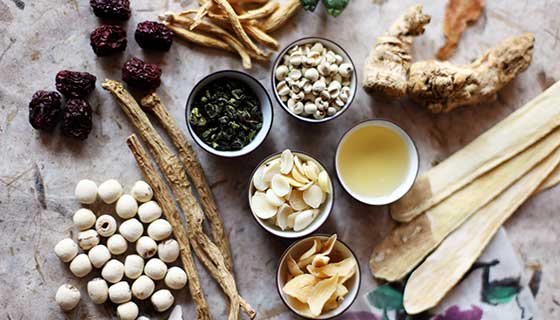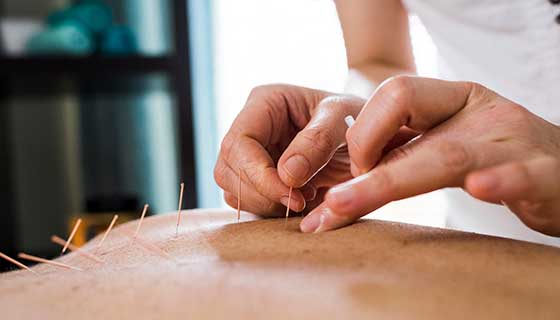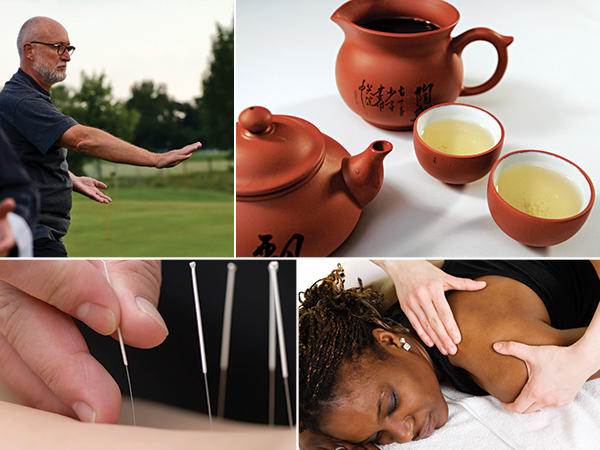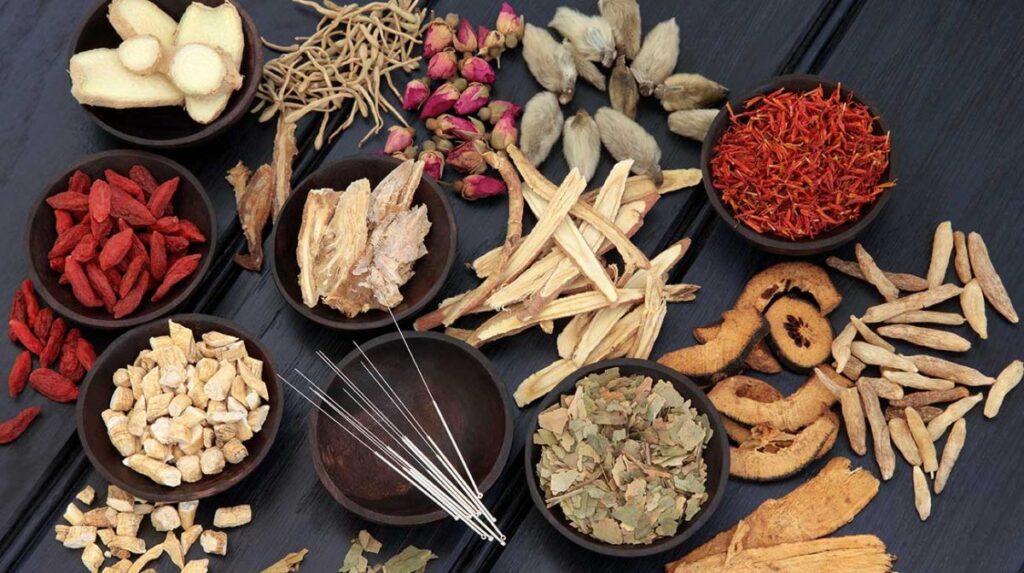Imagine a world where you can experience the benefits of acupuncture without the use of needles. Sounds intriguing, doesn’t it? Well, get ready to be amazed because there is a natural remedy that harnesses the power of acupuncture without any invasive procedures. This revolutionary approach, known as Natural Remedy For Acupuncture, offers an alternative solution for those seeking relief from various conditions. It’s time to discover a gentle and effective way to restore balance to your mind and body.
What is Acupuncture?
Acupuncture is a therapeutic practice that originated in ancient China and has been used for thousands of years to promote healing and well-being. It involves the insertion of thin needles into specific points on the body, known as acupuncture points, to stimulate and balance the body’s energy flow. Acupuncture is based on the belief that energy, known as qi, flows through meridians or pathways in the body. By targeting these points, acupuncture aims to restore the balance of energy and promote optimal health.
Definition of Acupuncture
Acupuncture, derived from the Latin words “acus” meaning needle, and “pungere” meaning to puncture, is a holistic therapy that involves the insertion of fine needles into specific points on the body. These acupuncture points are located along meridians or channels through which qi, the life energy, flows. The goal of acupuncture is to restore the balance of qi and promote the body’s natural healing processes.
History of Acupuncture
The history of acupuncture dates back over 2,500 years, making it one of the oldest medical practices in the world. It originated in ancient China and was refined and developed over time. The earliest written records of acupuncture can be traced back to the Huangdi Neijing (Yellow Emperor’s Inner Canon), a medical text dating back to the 2nd century BCE. Acupuncture spread throughout East Asia and eventually reached the West, where it gained popularity as an alternative and complementary therapy.
Principles of Acupuncture
Yin and Yang
Yin and Yang are fundamental concepts in Chinese philosophy and play a central role in acupuncture. They represent two opposing yet complementary forces that exist in everything. Yin is associated with darkness, coldness, and stillness, while Yang is associated with light, warmth, and movement. The balance between Yin and Yang is crucial for overall well-being, and acupuncture aims to restore and maintain this balance.
Meridians
Meridians are energy pathways or channels through which qi flows throughout the body. There are twelve main meridians, each associated with specific organs and functions. These meridians form a complex network that connects the entire body. Acupuncture points are located along these meridians and are stimulated to regulate the flow of qi and promote healing.
Qi (Life Energy)
Qi is the vital life energy that flows through the meridians and is responsible for maintaining health and vitality. It is believed that when qi becomes imbalanced or blocked, illness and discomfort can occur. Acupuncture seeks to restore the free flow of qi, allowing the body to heal itself and achieve optimal health. Qi is not visible or measurable, but its presence and influence can be felt and experienced.

Benefits of Acupuncture
Acupuncture offers a wide range of benefits and can be used to address various physical, mental, and emotional conditions. Here are some of the key benefits of acupuncture:
Pain management
Acupuncture is widely known for its effectiveness in pain relief. Whether it’s chronic pain, such as back pain or arthritis, or acute pain from an injury, acupuncture can help alleviate discomfort by reducing inflammation, promoting blood circulation, and stimulating the body’s natural pain-relieving mechanisms.
Stress reduction
In our fast-paced and demanding world, stress has become a common concern. Acupuncture can provide much-needed stress relief by balancing the body’s energy, calming the nervous system, and promoting a sense of relaxation and well-being. Regular acupuncture sessions can help manage stress levels and prevent its negative impact on physical and mental health.
Improved sleep
Sleep plays a vital role in our overall health and well-being. However, many people struggle with sleep disorders or difficulties falling asleep. Acupuncture can help regulate the sleep-wake cycle, promote relaxation, and address underlying imbalances that may be affecting sleep quality. By improving sleep, acupuncture can enhance energy levels, mood, and overall quality of life.
Enhanced fertility
For couples struggling with fertility issues, acupuncture can be a valuable adjunct therapy. It helps regulate the menstrual cycle, improve blood flow to the reproductive organs, and reduce stress and anxiety associated with infertility. Acupuncture can be used alongside conventional fertility treatments to increase the chances of successful conception and a healthy pregnancy.
Mental health support
Acupuncture can also provide support for mental health conditions such as anxiety, depression, and post-traumatic stress disorder (PTSD). By addressing imbalances in the body’s energy system, acupuncture can help regulate mood, reduce anxiety and depressive symptoms, and improve overall mental well-being. It can be used as a complementary therapy alongside other mental health treatments.
Existing Acupuncture Techniques
Acupuncture is practiced in different styles and approaches around the world, each with its unique characteristics and techniques. Here are some of the existing acupuncture techniques:
Traditional Chinese Medicine (TCM)
TCM is the most widely practiced form of acupuncture and follows the principles and theories of traditional Chinese medicine. It involves the assessment of various diagnostic factors, such as pulse and tongue analysis, and the selection of acupuncture points based on the patient’s specific condition. TCM acupuncture aims to restore the balance of yin and yang and promote overall health and wellness.
Japanese Acupuncture
Japanese acupuncture places a strong emphasis on gentle needling techniques and the use of thinner needles. It focuses on palpation and feedback from the patient to guide the treatment. Japanese acupuncture seeks to create a harmonious and balanced energy flow by targeting specific points and meridians. It is often characterized by its minimalistic approach and attention to detail.
Korean Acupuncture
Korean acupuncture, also known as Sasang constitutional acupuncture, incorporates the principles of traditional Korean medicine and the concept of constitutional types. It recognizes different body types and their unique patterns of imbalance. Korean acupuncture aims to restore harmony and balance by considering the individual’s constitutional characteristics and tailoring treatment accordingly.
Western Medical Acupuncture
Western medical acupuncture is a modern adaptation of acupuncture that integrates acupuncture principles into a Western medical framework. It is often practiced by medical professionals trained in conventional medicine. Western medical acupuncture focuses on evidence-based applications of acupuncture for specific conditions, such as pain management, and is often used alongside other medical treatments.

Common Acupuncture Points
Acupuncture points are specific locations on the body where needles are inserted during acupuncture treatment. Here are some of the common acupuncture points and their associated benefits:
Large Intestine 4 (LI4)
Located on the back of the hand between the thumb and index finger, LI4 is known as the “hegu” point. It is frequently used to relieve pain, especially headaches and toothaches. LI4 is also believed to strengthen the immune system and promote overall well-being.
Governing Vessel 20 (GV20)
GV20, also known as Bái Huì, is located at the top of the head along the midline. It is often used for calming the mind, improving mental clarity, and relieving headaches. It is also thought to be beneficial for the overall health of the body and mind.
Stomach 36 (ST36)
ST36, called Zusanli, is found on the lower leg, about four finger widths below the kneecap. It is commonly used to boost energy levels, improve digestion, and strengthen the immune system. ST36 is also known for its ability to relieve fatigue and enhance overall vitality.
Spleen 6 (SP6)
SP6, known as Sanyinjiao, is located on the inside of the lower leg, about four finger-widths above the ankle. It is often used to regulate the menstrual cycle, relieve menstrual cramps, and address digestive issues. SP6 is also believed to promote circulation and harmonize the flow of energy throughout the body.
Liver 3 (LV3)
LV3, called Taichong, is located on the top of the foot in the depression between the first and second toes. It is frequently used to alleviate stress, reduce irritability, and promote relaxation. LV3 is also believed to regulate the flow of qi and blood in the body.
Natural Remedies as Complementary to Acupuncture
In addition to acupuncture, there are several natural remedies that can complement and enhance its effects. These remedies work synergistically with acupuncture to promote overall health and well-being. Here are some commonly used natural remedies:
Herbal medicine
Herbal medicine is an integral part of traditional Chinese medicine and is often used in conjunction with acupuncture. Chinese herbs are carefully selected and formulated into herbal formulas or prescriptions that target specific health conditions. Herbal medicine can enhance the effects of acupuncture by providing ongoing support and nourishment to the body.
Moxibustion
Moxibustion is a technique that involves the burning of dried mugwort (Artemisia vulgaris) near the acupuncture points. The heat generated by moxibustion can help stimulate circulation, warm the body, and nourish the body’s energy. Moxibustion is frequently used in conjunction with acupuncture to enhance its therapeutic effects.
Acupressure
Acupressure involves applying pressure to specific acupuncture points with the fingers or hands instead of using needles. It can be self-administered or practiced by a trained practitioner. Acupressure can help promote relaxation, relieve tension, and enhance the free flow of energy in the body. It can be used as a complementary technique to acupuncture or as a standalone therapy.
Cupping therapy
Cupping therapy involves placing cups on the skin to create a suction effect. The cups may be made of glass, bamboo, or other materials. Cupping helps improve blood flow, release muscle tension, and promote detoxification. It is often used alongside acupuncture to further stimulate circulation and enhance the therapeutic effects of the treatment.
Tai Chi and Qigong
Tai Chi and Qigong are ancient mind-body practices originating in China. They involve slow, flowing movements, deep breathing, and meditation. Tai Chi and Qigong promote relaxation, balance, and the flow of energy throughout the body. Regular practice of these exercises can complement acupuncture by enhancing overall well-being and maintaining the balance of energy.

Herbal Medicine
Herbal medicine is an essential component of traditional Chinese medicine and has been used for centuries to promote health and treat various conditions. Here are some aspects of herbal medicine related to acupuncture:
Traditional Chinese herbs
Traditional Chinese herbs are derived from various parts of plants such as leaves, flowers, roots, or stems. They are often combined into herbal formulas to address specific health conditions. Chinese herbs are categorized based on their energetic properties and effects on the body. Each herb has unique properties and can be tailored to the individual’s specific needs.
Commonly used herbal formulas
There are numerous herbal formulas in Chinese medicine, each with its specific combination of herbs and indications. Some commonly used herbal formulas include Xiao Yao San (Free and Easy Wanderer), Gui Pi Tang (Restore the Spleen Decoction), and Bu Zhong Yi Qi Tang (Tonify the Middle and Augment the Qi Decoction). These formulas address various conditions such as stress, insomnia, and digestive disorders.
Benefits and precautions
Herbal medicine can provide numerous benefits when used correctly and under the guidance of a trained practitioner. Chinese herbs can help regulate imbalances, boost the immune system, and support the body’s natural healing processes. However, it is crucial to consult with a qualified herbalist or healthcare provider to ensure the safe and appropriate use of herbs. Some herbs may interact with medications or have contraindications for specific individuals.
Moxibustion
Moxibustion is a therapeutic technique that involves the burning of dried mugwort near specific acupuncture points on the body. Here are some key aspects of moxibustion:
Definition of moxibustion
Moxibustion derives from the Latin word “moxa” meaning mugwort and “bustion” meaning burning. It involves the use of burning dried mugwort, also known as moxa, to stimulate acupuncture points and promote healing. Moxibustion can be performed directly on the skin or indirectly using various mediums, such as the tops of acupuncture needles or ginger slices.
Types of moxibustion
There are different types of moxibustion techniques. Direct moxibustion involves applying moxa directly onto the skin and burning it until a warm sensation is felt. Indirect moxibustion, on the other hand, uses a barrier, such as ginger or salt, between the moxa and the skin to provide a gentler and more controlled heat. A third type, called stick-on moxibustion, involves the use of adhesive moxa sticks that can be attached to the skin without the need for direct burning.
Health benefits of moxibustion
Moxibustion is believed to enhance circulation, improve digestion, strengthen the immune system, and promote the flow of energy in the body. The heat from moxibustion can penetrate deeply into the tissues, providing a warming and nourishing effect. Moxibustion is commonly used to address conditions such as arthritis, menstrual disorders, digestive issues, and fatigue.

Acupressure
Acupressure is a therapeutic technique that involves applying pressure to specific acupuncture points on the body. Here are some key aspects of acupressure:
Acupressure points
Acupressure points are the same as acupuncture points and are located along the meridians. These points can be stimulated by applying pressure with the fingers, thumbs, or palms. Each acupressure point has specific indications and therapeutic effects.
Techniques and benefits
Acupressure techniques can vary, but they generally involve applying steady and firm pressure to an acupressure point for a certain duration. Pressure can be applied in a circular motion, with gentle rocking, or sustained pressure. Acupressure can help relieve pain, reduce muscle tension, promote relaxation, and improve blood circulation. It can be used for self-care or administered by a trained practitioner.
Safety considerations
Acupressure is generally safe when applied correctly. However, it is essential to exercise caution and avoid applying excessive pressure or using acupressure at certain points during pregnancy or if you have certain medical conditions. It is advisable to consult with a qualified acupressure practitioner or healthcare provider before using acupressure.
Tai Chi and Qigong
Tai Chi and Qigong are ancient mind-body practices that combine movement, breath control, and meditation. Here are some key aspects of Tai Chi and Qigong:
Overview of Tai Chi and Qigong
Tai Chi and Qigong are rooted in ancient Chinese philosophy and are often practiced together. Tai Chi involves a series of slow, graceful movements linked with deep breathing and relaxation. Qigong, on the other hand, focuses more on stationary postures, breathwork, and visualization. Both Tai Chi and Qigong aim to cultivate and balance the body’s vital energy, or qi.
Health benefits of practicing
Regular practice of Tai Chi and Qigong has been associated with numerous health benefits. These practices can help improve balance, flexibility, strength, and coordination. They can also enhance cardiovascular health, reduce stress and anxiety, improve mental clarity and focus, and boost overall well-being. Tai Chi and Qigong are suitable for people of all ages and fitness levels.
Recommended resources
If you’re interested in learning Tai Chi or Qigong, there are several resources available to help you get started. Look for local classes or workshops in your area where you can learn from experienced instructors. You can also find instructional books, DVDs, and online videos that provide step-by-step guidance on the practice of Tai Chi and Qigong. Remember to start slowly and practice at your own pace, listening to your body’s needs and limitations.
Acupuncture is a versatile and time-tested therapy that offers numerous benefits for physical, mental, and emotional well-being. With its principles rooted in ancient Chinese medicine, acupuncture aims to restore the balance of energy in the body and promote healing from within. Whether used on its own or in conjunction with other natural remedies, acupuncture can be a valuable tool in maintaining and improving overall health. Exploring the different techniques and understanding the principles behind acupuncture can empower individuals to make informed choices about their health and well-being.

Related Terms About Natural Remedy For Acupuncture
Acupuncture Points For Yin Deficiency, Can Acupuncture Help With Tension, Chinese Medicine Remedies, Chinese Medicine Sinus Remedy, How Can Acupuncture Help With Allergies, How To Relax Your Eyes Home Remedy, Natural Headache Relief Pressure Points, Natural Healing Acupuncture Center, Natural Healing Acupuncture Center Dubai, Natural Healing Acupuncture Centre